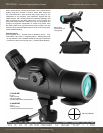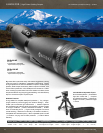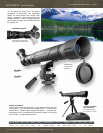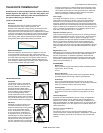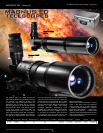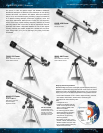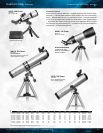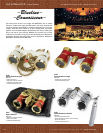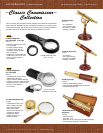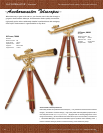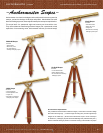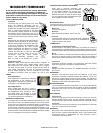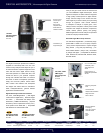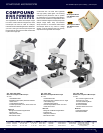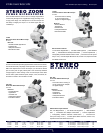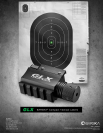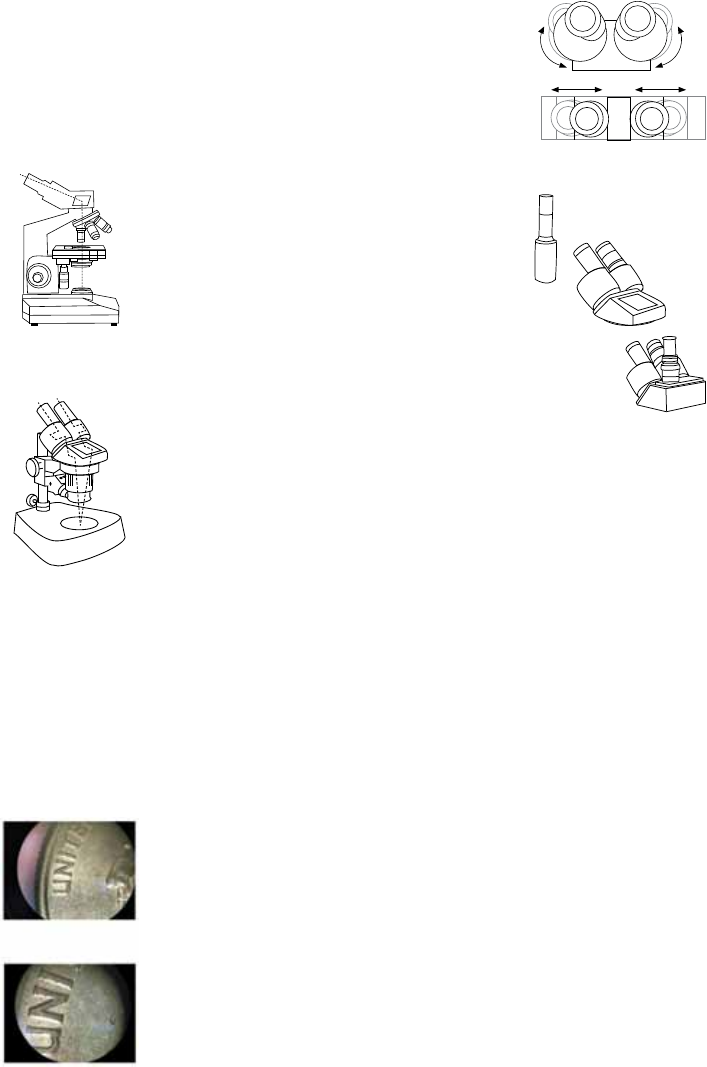
INTERPUPILIARY DISTANCE ADJUSTMENT
When using a binocular microscope with
interpupiliary adjustment, there is an adjustment
for the distance between the viewers’ eyes.
A young child will have a small interpupiliary
distance (IPD) while an adult will have a larger
one. The eyepiece lenses will spread apart or get
closer together to t each individual.
MICROSCOPE HEAD
The head refers to the upper part of the microscope
that contains the eyepiece tube and prisms.
Monocular
Contains one eyepiece
Binocular
Binocular has two eyepieces, one for each eye
Trinocular
The third vertical viewing port can be used with an eyepiece for
a second person, such as an instructor. Or can be used with an
adapter for video or still camera.
ILLUMINATION
Transmitted and Oblique Illumination
Oblique lighting or top lighting shines down and reects off opaque or
solid specimens. Transmitted lighting or bottom lighting shines up through
transparent objects. Not all microscopes will have these types of illumination.
Mirror
Mirrored illumination is a simple and inexpensive lighting system that uses
light from an external source (in direct sunlight, lamp etc) and reects it
upward to the condenser/specimen from a mirror located below the stage.
Fluorescent
Fluorescent illumination provides a cool bright light. Ideal when viewing
slides for long periods or studying live cellular specimens.
Halogen
Halogen illumination provides the very brightest illumination, but tends to
give off heat.
DIAPHRAGM
Generally a ve-hole disc placed under the stage on a high power
microscope. Each hole is a different diameter. By rotating it, you can vary
the amount of light passing through the stage opening. This will help to
properly illuminate the specimen and increase contrast and resolution. The
diaphragm is most useful at the higher powers.
WORKING DISTANCE
This is the distance between the specimen or cover slip and the objective
lens. On compound microscopes that use slides, the stage is adjustable
allowing the user to zoom in or out of an image. On stereo microscope the
stage is xed.
ADJUSTMENTS
Coarse Focus
This is the rough focus knob on the microscope. You use it to move the
objective lenses toward or away from the specimen. Generally use the
coarse focus rst to get close then adjust the ne focus knob for ne tuning.
Fine Focus
This is the knob used to ne tune the focus on the specimen. It is also used
to focus on various parts of the specimen.
WARRANTY
Microscope 1-Year Limited Warranty USA and Canada Only, This warranty
does not cover consumer caused damages, abuse, normal wear-and-tear,
unauthorized repairs or modications. For more information, refer to
enclosed warranty with products.
MIC R OSC O PE TER M INO LO GY
A microscope is an instrument for viewing objects that
are too small to be seen by the naked or unaided eye.
The science of investigating small objects using such an
instrument is called microscopy. The term microscopic
means minute or very small.
TYPES OF MICROSCOPES
Compound
Constructed with two optical paths at the same
angle. The compound microscope has two
systems of lenses for greater magnication. The
objective lens provides the primary magnication
which is compounded (multiplied) by the ocular
lens (eyepiece). Images produced by compound
microscopes are two dimensional. This type of
microscope is used to study very small specimens and
requires the specimens to be mounted on a slide.
Stereo
Designed with two separate optical paths with two
objectives and two eyepieces to provide slightly
different viewing angles to the left and right eyes.
In this way it produces a 3-D visualization of the
sample being examined. The zoom provides
different magnication and features an inversion
system which allows the image to be viewed
normally and right side up. This type features
a large stage for closer viewing of the non-
microscopic world like rocks, insects,
owers, and dissection specimens and
does not need to be mounted on a slide.
Digital Microscopes
BARSKA's digital microscopes are state-of-the-art integration of
high quality microscope and a digital camera. Simply connect
the microscope to the computer with the USB cord to magnify
the object and view them on your PC screen and with option to
save. Digital microscopes are great for educational purposes
because several people can view the specimen at once, unlike
a traditional microscope where one person can view at time.
POWER
Total Magnication
Total magnication is calculated by multiplying
the magnication of the eyepiece by the
magnication of the objective. 10x(eyepiece) x
4x(objective) = 40x Total Magnication
Zoom Magnication
Zoom models allow the user to zoom or
change magnication continuously throughout
the magnication range providing a low to
high power range. For example, a 7x-45x
microscope has the ability to magnify the object
7 to 45 times higher than an unaided eye.
WIDEFIELD EYEPIECE (WF)
An eyepiece with an achromatic doublet lens designed in such a way
that it does not have to be limited to viewing only in its center, and the
portion of the lens that allows non-distorted viewing is larger than a
normal lens. This appears to the user as a bigger aperture or “hole”
to look through. It therefore has the advantage of being easier to use
and more forgiving of a user’s head movements. An eyepiece listed
as WF10X/18mm would indicate it has a wideeld achromatic doublet
lens, 10x magnication and is 18mm in diameter
U.S. Quarter at 20x
U.S. Quarter at 40x
Compound
Light Path
Stereo
Light Path
w w w . b a r s k a . c o m
84
2011 BARSKA Sport Optics Catalog



